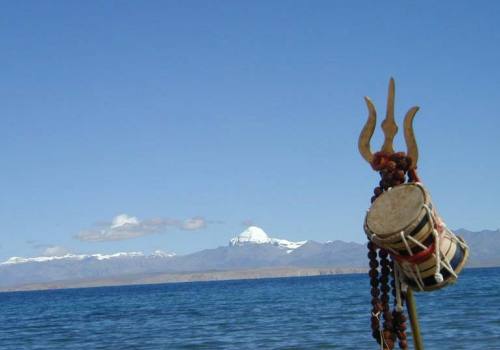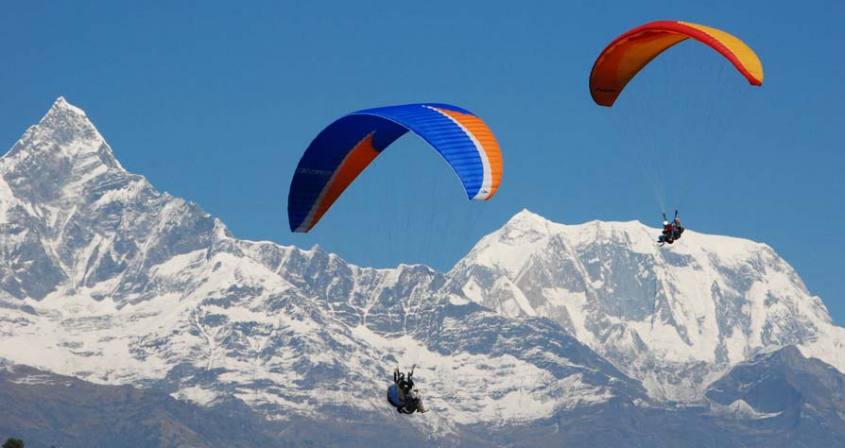Paragliding in Nepal
About Trip -
Paragliding in Nepal with Pink Mountain Treks and Expedition can be a truly wonderful and fulfilling experience for the adventurous thrill seeker. A trip will take you over some of the best scenery on earth, as you share airspace with Himalaya griffin vultures, eagles, kites and float over villages, monasteries, temples, lakes and jungles, with a fantastic view of the majestic Himalayas. The last three years have seen the activity flourish in Pokhara and it is now an internationally recognized destination for free-flight gliding enthusiasts. The take-off point for these flights in Sarangkot (1592m), which also offers prime views of Phewa lake and the Mountains at sunrise and sunset (provided the skies are clear) and the landing is by the lake. No previous experience is required as qualified pilots provide a short briefing before launching.
The Best Time to Take Up the Sports
Gliding is a weather dependent sport and the flying season in Nepal commences in November and lasts through to February, the best months being November and December. By virtue of its latitude and monsoonal climate, the tree line in Nepal is at an incredible 3,900 m above sea level. With conditions milder than summer alpine, these are excellent and constant atmospherics. The topography and climate of Nepal also make it an ideal destination for all levels of pilots. Subtropical conditions provide plenty of thermals and, combined with the long valleys common in Nepal, they produce perfect 'cloud streets' ideal for paragliders, inviting them to fly along this "sky highway". The local microclimate, controlled by the numerous lakes in the valley, is unique, which makes it even better for the glider.
The best months for flying are November, December and January. Cloud base varies between 2000m and 2700m. Come February the extremely short and hardly noticeable winter is over and the ground is very dry, the air hazy. Gone are the mild conditions of the previous 3 months. By March and April there is a mountain wind, coming off the big peaks which can cause valley winds. Indeed you can windsurf in April on Phewa Tal, the biggest lake in the Pokhara valley. The heavy air is just waiting for the monsoon and the intermittent storms in April and May are only a forerunner for the spectacular break in the weather which comes in early June.
Where Do We Fly ?
The main area for flying in Nepal is the Annapurna region, more specifically the Pokhara valley. This lakeside town is Nepal's second "city", nestled at the foot of the Annapurna Himal. The views commanded from here, of three of the worlds 8000m peaks, are unsurpassed. At an altitude of 800m ASL the subtropical climate means that, year round, it is shorts and T-shirt weather. The micro-climate of the valley makes it an ideal area for flying, with far more constant conditions than the Kathmandu valley 150 km east.
There are several sites around Phew Taal (the lake) but the most accessible is Sarangkot (1500m ASL). A view point 700m above Pokhara, it is unique in that it has a road running to the top. A short walk brings you to the only purpose built take off in the country. Cut out of the slope is a 45m by 45m clearing. With regular cycles providing easy reverse launches, you could not ask for a more picturesque site. With the lake 2000 ft below, the mountains behind, and the unlimited potential for XC and out and returns, this has quickly become the main site for the area, and many pilots have based themselves in Pokhara for the season, flying from this mountain alone.
Outline Itinerary -
Day 01:Itinerary will provide on your request/travelers can choose any one or any of your choice/cost will depend on program for chosen program.
Customize TripDetail Itinerary
Day 1Itinerary will provide on your request/travelers can choose any one or any of your choice/cost will depend on program for chosen program.
Trip Map
Fixed Departure

Kailash Mansarovat tour with Pink Mountain Treks and Expedition let you to feel most memorable adventure trip of the life.…
In Detail